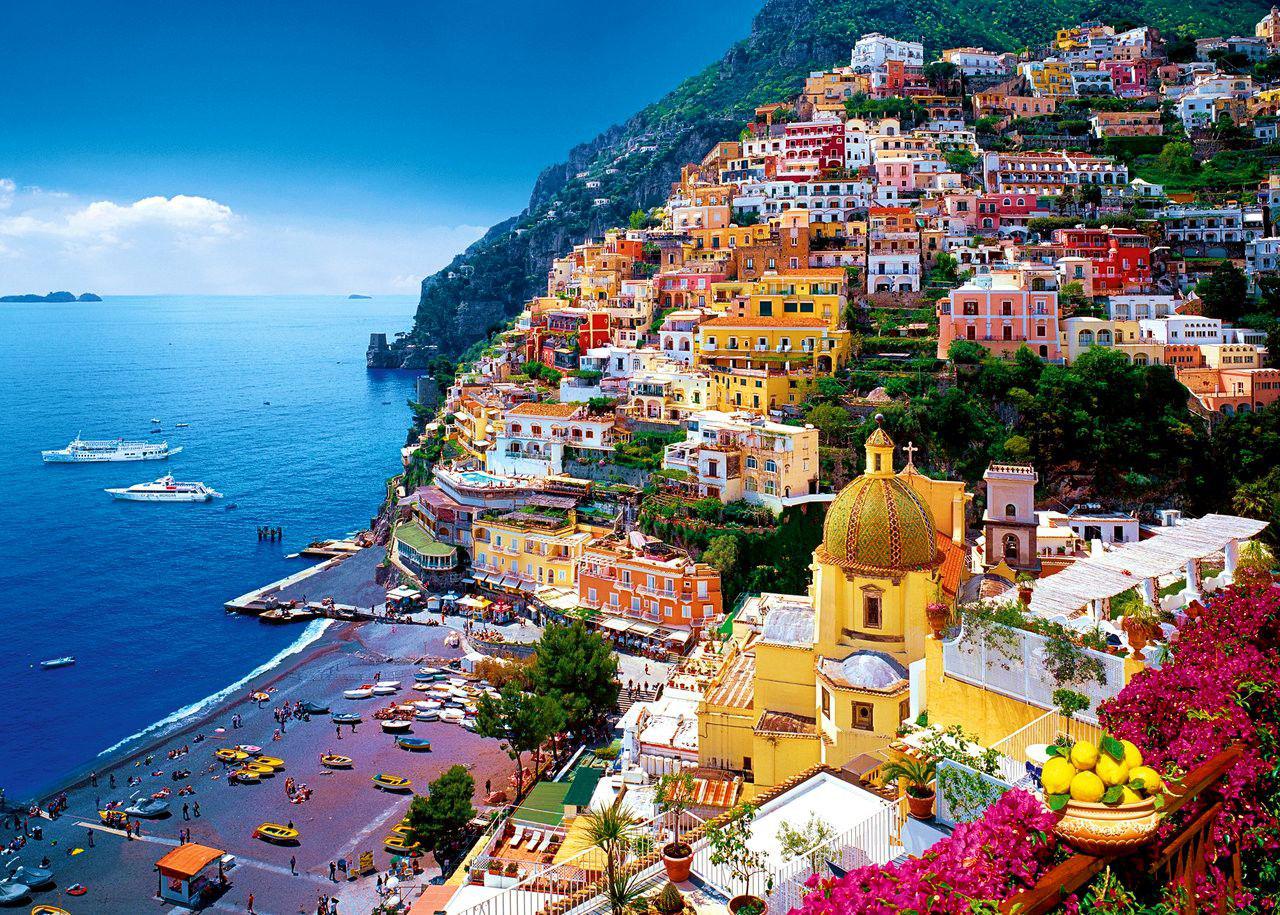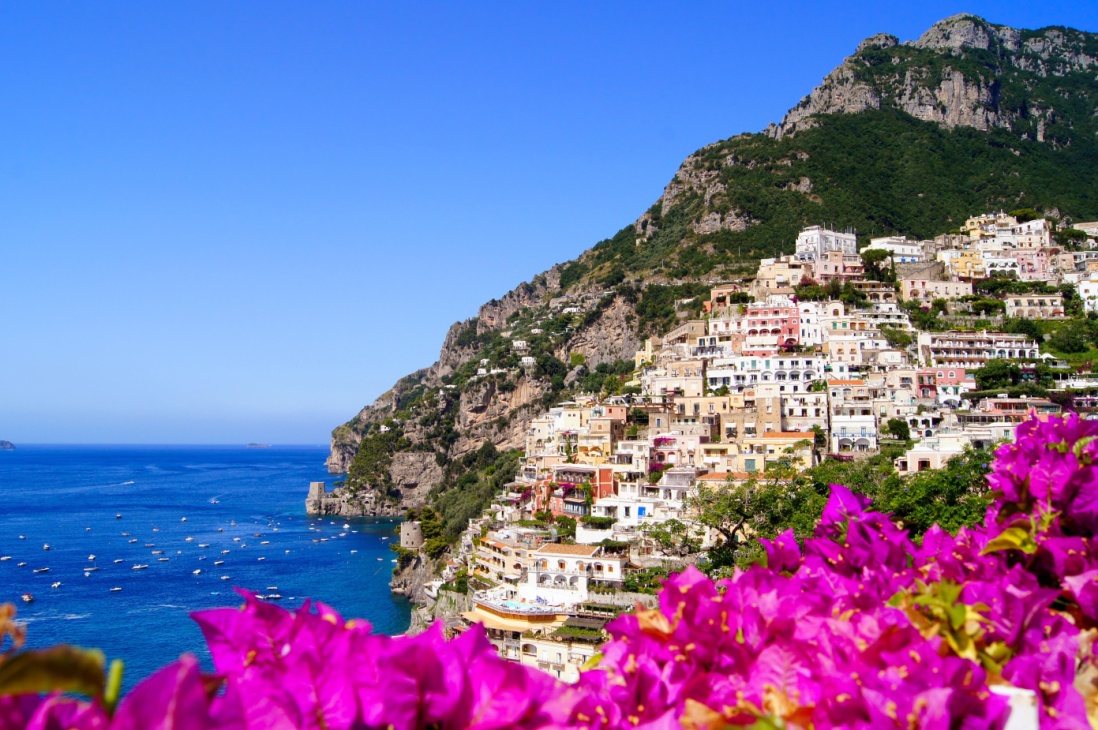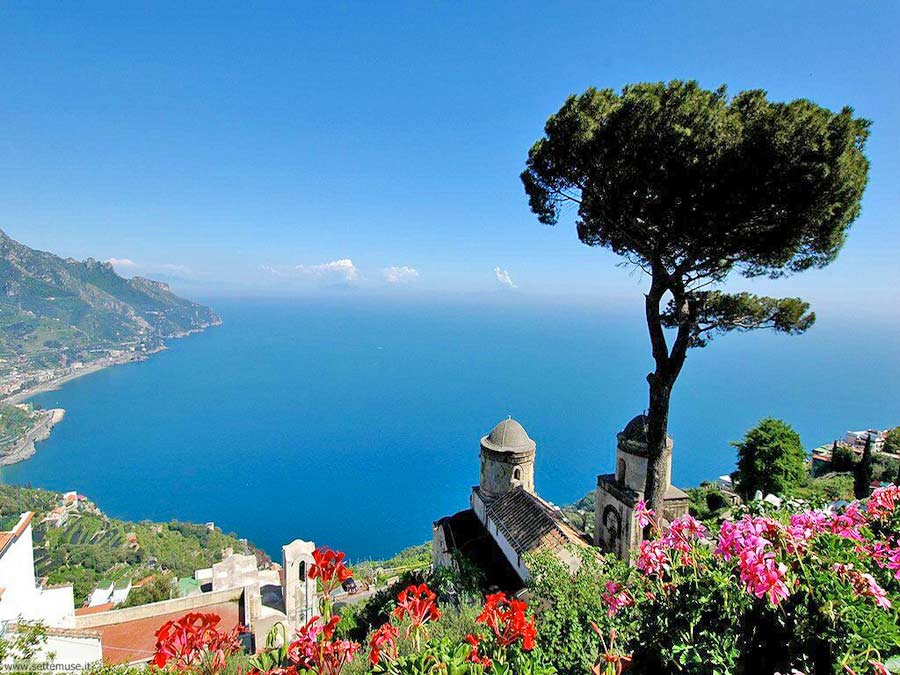
In the 1920s and 1930s, Amalfi was a popular holiday destination for the British upper class and aristocracy.
Amalfi is the main town of the coast on which it is located, named Costiera Amalfitana (Amalfi Coast), and is today an important tourist destination together with other towns on the same coast, such as Positano, Ravello and others. Amalfi is included in the UNESCO World Heritage Sites.
The Amalfi coast is famed for its production of Limoncello liqueur and the area is a known cultivator of lemons. The correct name is “sfusato amalfitano”, and they are typically long and at least double the size of other lemons, with a thick and wrinkled skin and a sweet and juicy flesh without many pips. It is common to see lemons growing in the terraced gardens along the entire Amalfi coast between February and October. Amalfi is also a known maker of a hand-made thick paper which is called “bambagina”. It is exported to many European countries and to America and has been used throughout Italy for wedding invitations, visiting cards and elegant writing paper. The paper has a high quality and has been used by artists such as Giuseppe Leone, who described it: “There is a whole world that the Amalfi paper evokes and an artist who is sensitive to the suggestion of these places is aware that it is unique and exciting”.
Three traditional events draw numerous visitors to Amalfi. First are the feast days of Saint Andrew (25–27 June, and 30 November), celebrating the city’s patron saint. Then there is “Byzantine New Year’s Eve” (31 August) celebrating the beginning of the New Year according to the old civil calendar of the Byzantine Empire. The third event is the Historical Regata (first Sunday in June), a traditional rowing competition among the four main Italian historical maritime republics: Amalfi, Genoa, Pisa and Venice. This event is hosted by a different city every year, so it comes to Amalfi once every four years.
Amalfi has to be lived in to be fully understood, frequenting the winding paths along the alley-ways, up the step steps that lead to the higher part of the town, between the pastel- coloured houses that seem to hang suspended but are set into the rocks.



